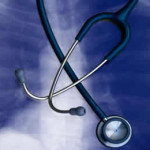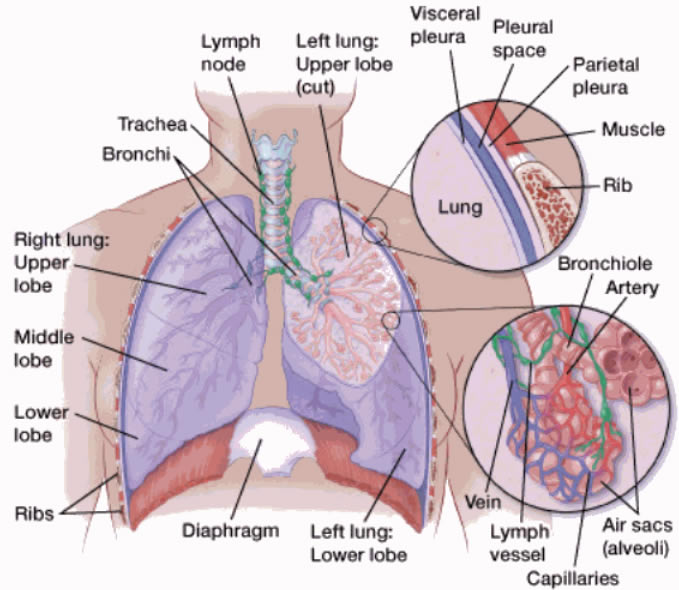Where Does Lung Cancer Usually Start and Come from?
The exact cause of lung cancer is not known yet, but some risk factors have been confirmed. The type of cancer cells is also essential since this can significantly affect the way of doctors make the treatment plan. This type is also important for the answer of where the lung cancer starts and comes from!
Lung cancer is common cancer in many countries, including in the U.S and U.K. Even in the U.S, it is the top cause of cancer death – and the 2nd common cancer among men and women.
Cigarette smoking
So far, smoking is the most common risk factor. Even most cases of lung cancer are linked to cigarette smoking (either active smoking or secondhand smoke).
Using other products of tobacco such as pipes or cigars also has an effect to increase the risk. Tobacco itself hosts more than 7,000 chemicals and most of them are toxic, according to CDC.
Smokers are about 15-30 times more likely to develop lung cancer or die due to this cancer than non-smokers. Even occasionally smoking can increase the risk, too.
In smokers, those who can stop smoking have a lower risk than others who fail for quitting. If you are smoker, quit as soon as possible!
Moreover, smoking is linked to the increased risk of other cancers, including; cancers of nose, mouth, larynx, throat, liver, stomach, kidneys, pancreas, colon, bladder, rectum, bone marrow, and blood. It can also affect your overall health and raise the risk of other health conditions!
 For summary the following are what tobacco smoke can do to affect your risk of lung cancer:
For summary the following are what tobacco smoke can do to affect your risk of lung cancer:
- The more you inhale or get exposure to tobacco smoke, the greater risk you are to develop lung cancer.
- The length of time we have been a smoker is also important. More years we spend for smoking, the greater risk we are! Therefore, starting smoking at younger age is more harmful.
- There is never too late for quitting. The sooner you stop, the lower your risk and better your health. Quitting can be significant to help prevent lung cancer.
- As noted before, secondhand smoke also has an effect on the risk. But it is much less than active smoking (if you smoke yourself).
It seems that smoking is the main risk factor. However it is not the only one. Some other factors also can increase the risk, though the effect may be far less common than tobacco smoking.
A family history of lung cancer
Some studies are observing the effect of family history on the risk of lung cancer. It’s estimated that the risk increases by about 50 percent if you have the first degree relative of the same condition.
This hereditary risk factor is standalone or regardless of whether or not you are a smoker. Interestingly, the risk may be even greater for those who have brother /sister with lung cancer, if compared to a parent.
Since there is a pattern of increased risk of the disease in family members, experts believe that particular gene can be inherited to trigger the disease. Some studies are going to find such as a gene!
There is nothing we can do to change a family history of lung cancer (it is unchangeable risk factor). But there are still plenty of options to reduce your risk!
Other risk factors
These include:
- Too much exposure to radon gas. Radon is natural radiation that comes from the breakdown of uranium in rock, water, or soil. Radon gas can accumulate in the building. You can purchase radon testing kit to measure the level of radon gas in your home. The radon gas level can vary from area to area. If you live in high radon area, it’s much more important to avoid smoking!
- The long term exposure to toxic chemicals in the environment or workplace. These include arsenic, asbestos, diesel exhaust, air pollution, and silica.
- A personal history of other lung problems such as tuberculosis.
- Taking previous cancer treatments. Some cancer treatments for other cancers might have a role to increase the risk of lung cancer.
- Having previous cancers that are also linked to smoking. These include cancers of esophagus, neck, head, and cervix – the increased risk of lung cancer might also come from the use of previous cancer treatments (such as radiation therapy) when treating these cancers.
- Decreased function of the body immune system. If your immune system is weak, cancer cells are easier to grow. Lowered immunity is common in people with autoimmune conditions such as lupus, rheumatoid arthritis, and HIV /AIDS.
First, it’s important to understand between primary and secondary cancer. Primary cancer means it starts growing from cells of the original site. Cancer cells can break away and spread to other areas of the body, causing secondary cancer.
Cancer that has started elsewhere in the body can spread to the lungs, causing secondary lung cancer. What we are talking in this section is primary lung cancer, a cancer that starts to grow from original cells in the lungs.
*Image credit to cancer.org
In general, lung cancer is divided into two major types; small cell and non-small cell lung cancer. Non-small cell type is the most common type and it has several sub-types, these include large cell carcinoma, adenocarcinoma, and squamous cell carcinoma.
And where usually lung cancer starts is dependent on the type of this cancer. Each type is likely to start growing in particular part of the lungs.




